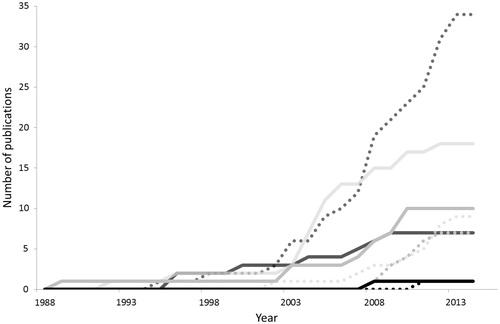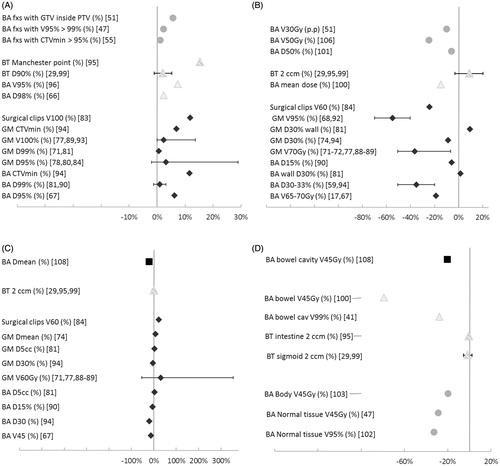Figures & data
Table 1. Results from the PubMed searches and paper selection.
Table 2. Applied plan adaptations and reported dosimetric gains in the clinically implemented studies for external beam radiotherapy.
Table 3. Applied plan adaptations and reported dosimetric gains for adaptation in the clinically implemented studies for a combination of brachy- and external beam radiotherapy.




